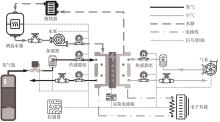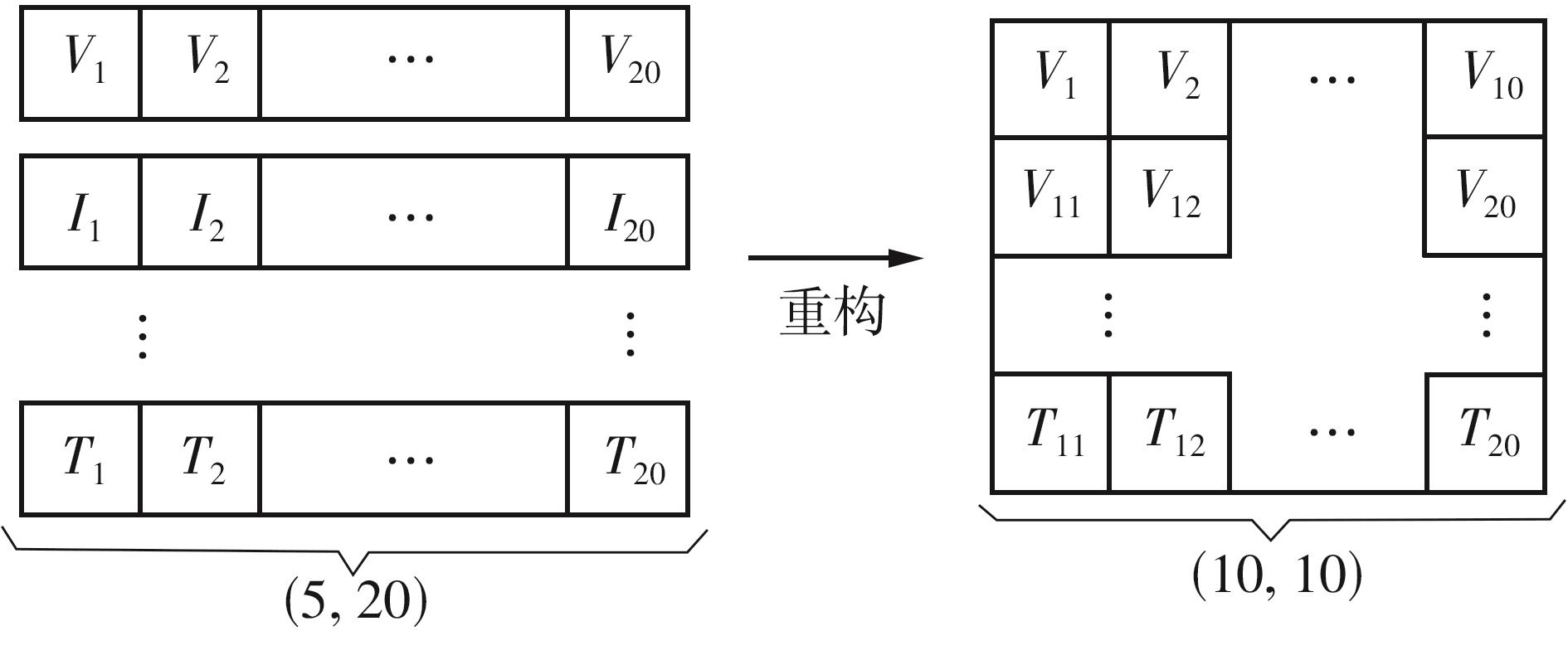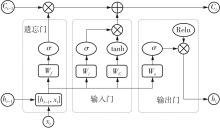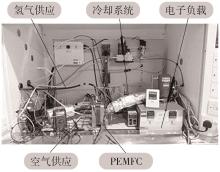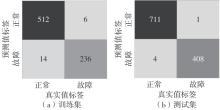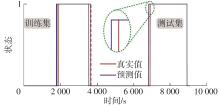Journal of South China University of Technology(Natural Science Edition) ›› 2025, Vol. 53 ›› Issue (7): 21-30.doi: 10.12141/j.issn.1000-565X.240320
• Energy, Power & Electrical Engineering • Previous Articles Next Articles
Proton Exchange Membrane Fuel Cell Fault Prediction Method Based on Deep Learning
ZUO Bin1,2, DONG Tianhang3, ZHANG Zehui3, WANG Huajun4, HUO Weiwei5, GONG Wenfeng6, CHENG Junsheng1
- 1.College of Mechanical and Vehicle Engineering,Hunan University,Changsha 410082,Hunan,China
2.CEEC Energy Storage Technology (Wuhan) Co. ,Ltd. ,Wuhan 430200,Hubei,China
3.China-Austria Belt and Road Joint Laboratory on Artificial Intelligence and Advanced Manufacturing,Hangzhou Dianzi University,Hangzhou 310018,Zhejiang,China
4.China Auto Information Technology (Tianjin) Co. ,Ltd. ,Tianjin 300300,China
5.College of Mechanical and Electrical Engineering,Beijing Information Science & Technology University,Beijing 100192,China
6.Guangxi Key Laboratory of Ocean Engineering Equipment and Technology,Beibu Gulf University,Qinzhou 535011,Guangxi,China
-
Received:2024-06-18Online:2025-07-25Published:2024-12-27 -
Contact:张泽辉(1994—),男,博士,特聘副研究员,主要从事设备智能健康管理研究。 E-mail:zhangtianxia918@163.com -
About author:左彬(1984—),男,博士生,高级工程师,主要从事新能源智能运维研究。E-mail: zuobin123@ceec.net.cn -
Supported by:the National Natural Science Foundation of China(52401376);the National Key R & D Program of China(2022YFE0210700);the“Pioneer”and“Leading Goose”R & D Program of Zhejiang Province(2024C03254);the Natural Science Foundation of Zhejiang Province(LTGG24F030004)
CLC Number:
Cite this article
ZUO Bin, DONG Tianhang, ZHANG Zehui, WANG Huajun, HUO Weiwei, GONG Wenfeng, CHENG Junsheng. Proton Exchange Membrane Fuel Cell Fault Prediction Method Based on Deep Learning[J]. Journal of South China University of Technology(Natural Science Edition), 2025, 53(7): 21-30.
share this article
| [1] | 赵天宇,陈东,霍为炜,等 .氢燃料电池汽车能量管理系统模糊控制仿真研究[J].重庆理工大学学报(自然科学),2022,36(3):36-40. |
| ZHAO Tianyu, CHEN Dong, HUO Weiwei,et al .Simulation of energy management system of hydrogen fuel cell vehicle based on fuzzy control[J].Journal of Chongqing University of Technology (Natural Science),2022,36(3):36-40. | |
| [2] | 井绪宝,刘丛浩,郭宇,等 .应用LADRC的车用质子交换膜燃料电池温湿度控制优化研究[J].重庆理工大学学报(自然科学),2023,37(5):54-59. |
| JING Xubao, LIU Conghao, GUO Yu,et al .Research on optimization of temperature and humidity control of proton exchange membrane fuel cells for vehicles using LADRC[J].Journal of Chongqing University of Technology (Natural Science),2023,37(5):54-59. | |
| [3] | 安治国,张东阳,张振,等 .阶梯型流道对质子交换膜燃料电池性能的影响[J].重庆交通大学学报(自然科学版),2022,41(12):134-140,150. |
| AN Zhiguo, ZHANG Dongyang, ZHANG Zhen,et al .Influence of stepped flow channel on the performance of proton exchange membrane fuel cell[J].Journal of Chongqing Jiaotong University (Natural Science),2022,41(12):134-140,150. | |
| [4] | LI H W, QIAO B X, LIU J N,et al .A data-driven framework for performance prediction and parameter optimization of a proton exchange membrane fuel cell[J].Energy Conversion and Management,2022,271:116338/1-15. |
| [5] | ZHANG Y F, MA R, XIE R Y,et al .A degradation prediction method for PEM fuel cell based on deep temporal feature extraction and transfer learning[J].IEEE Transactions on Transportation Electrification,2024,10(1):203-212. |
| [6] | MIN W, LIANGFEI X, XIAOFAN Y .A coupled CFD model for an accurate and fast prediction of the unsteady operation process of a proton exchange membrane fuel cell[J].Energy Conversion and Management,2022,272:116317/1-16. |
| [7] | ZIHAN T, CHU Z, JINLIN X,et al .Evolutionary gate recurrent unit coupling convolutional neural network and improved manta ray foraging optimization algorithm for performance degradation prediction of PEMFC[J].Applied Energy,2023,336:120821/1-14. |
| [8] | 张宁,霍为炜,孙超,等 .应用模糊规则的燃料电池水管理容错控制[J].重庆理工大学学报(自然科学),2022,36(5):78-83. |
| ZHANG Ning, HUO Weiwei, SUN Chao,et al .Fault tolerant control of fuel cell water management based on fuzzy rules[J].Journal of Chongqing University of Technology (Natural Science),2022,36(5):78-83. | |
| [9] | 孙铁生,陈山,孙红,等 .质子交换膜燃料电池发动机热管理特性仿真分析[J].重庆大学学报,2023,46(4):27-36. |
| SUN Tiesheng, CHEN Shan, SUN Hong,et al .Simulation analysis on thermal management characteristics of proton-exchange-membrane fuel-cell engine[J].Journal of Chongqing University,2023,46(4):27-36. | |
| [10] | 张雪霞,蒋宇,孙腾飞,等 .质子交换膜燃料电池水淹和膜干故障诊断研究综述[J].西南交通大学学报,2020,55(4):828-838,864. |
| ZHANG Xuexia, JIANG Yu, SUN Tengfei,et al .Review on fault diagnosis for flooding and drying in proton exchange membrane fuel cells[J].Journal of Southwest Jiaotong University,2020,55(4):828-838,864. | |
| [11] | DU R, WEI X, WANG X,et al .A fault diagnosis model for proton exchange membrane fuel cell based on impedance identification with differential evolution algorithm[J].International Journal of Hydrogen Energy,2021,46(78):38795-38808. |
| [12] | LIU Z, SUN Y, MAO L,et al .Efficient fault diagnosis of proton exchange membrane fuel cell using external magnetic field measurement[J].Energy Conversion and Management,2022,266:115809/1-13. |
| [13] | 雍加望,赵倩倩,冯能莲 .基于非线性动态模型的质子交换膜燃料电池故障诊断[J].化工学报,2022,73(9):3983-3993. |
| YONG Jiawang, ZHAO Qianqian, FENG Nenglian .Fault diagnosis of proton exchange membrane fuel cell based on nonlinear dynamic model[J].CIESC Journal,2022,73(9):3983-3993. | |
| [14] | XIAO F, CHEN T, ZHANG J,et al .Water management fault diagnosis for proton-exchange membrane fuel cells based on deep learning methods[J].International Journal of Hydrogen Energy,2023,48(72):28163-28173. |
| [15] | 刘昕宇,韩莹,陈维荣,等 .基于改进SSA-DBN的质子交换膜燃料电池水故障智能分类方法[J].电力自动化设备,2024,44(4):18-24. |
| LIU Xinyu, HAN Ying, CHEN Weirong,et al .Intelligent classification method of water faults for proton exchange membrane fuel cell based on improved SSA-DBN[J].Electric Power Automation Equipment,2024,44(4):18-24. | |
| [16] | RUBIO M A, SANCHEZ D G, GAZDZICKI P,et al .Failure mode diagnosis in proton exchange membrane fuel cells using local electrochemical noise[J].Journal of Power Sources,2022,541:231582/1-10. |
| [17] | ZUO B, ZHONG Z H, CHENG J S,et al .Data-driven flooding fault diagnosis method for proton-exchange membrane fuel cells using deep learning technologies[J].Energy Conversion and Management,2022,251:115004/1-9. |
| [18] | 谢雨岑 .基于深度学习的燃料电池性能衰退预测研究[D].成都:电子科技大学,2021. |
| [19] | 符灏 .质子交换膜燃料电池系统的动态建模与优化控制[D].南京:东南大学,2022. |
| [20] | HUANG W, JIAN Q, FENG S,et al .A hybrid optimization strategy of electrical efficiency about cooling PEMFC combined with ultra-thin vapor chambers[J].Energy Conversion and Management,2022,254:115301/1-15. |
| [21] | HUO W, LI W, ZHANG Z,et al .Performance prediction of proton-exchange membrane fuel cell based on convolutional neural network and random forest feature selection[J].Energy Conversion and Management,2021,243:114367/1-10. |
| [22] | DAI W, WANG H J, YUAN X Z,et al .A review on water balance in the membrane electrode assembly of proton exchange membrane fuel cells[J].International Journal of Hydrogen Energy,2009,34(23):9461-9478. |
| [23] | KANDLIKAR S G, GAROFALO M L, LU Z .Water management in a PEMFC:water transport mechanism and material degradation in gas diffusion layers[J].Fuel Cells,2011,11(6):814-823. |
| [24] | LIM B H, MAJLAN E H, DAUD W,et al .Effects of flow field design on water management and reactant distribution in PEMFC:a review[J].Ionics,2016,22:301-316. |
| [25] | KONG I M, JUNG A, KIM Y S,et al .Numerical investigation on double gas diffusion backing layer functionalized on water removal in a proton exchange membrane fuel cell[J].Energy,2017,120:478-487. |
| [26] | GU X, HOU Z, CAI J .Data-based flooding fault diagnosis of proton exchange membrane fuel cell systems using LSTM networks[J].Energy and AI,2021,4:100056/1-12. |
| [27] | LUO Z, CHANG Z, ZHANG Y,et al .Electro-osmotic drag coefficient and proton conductivity in Nafion® membrane for PEMFC[J].International Journal of Hydrogen Energy,2010,35(7):3120-3124. |
| [28] | MAO L, JACKSON L, HUANG W,et al .Polymer electrolyte membrane fuel cell fault diagnosis and sensor abnormality identification using sensor selection method[J].Journal of Power Sources,2020,447:227394/1-10. |
| [29] | LIU M H, ZENG A L, CHEN M X,et al .SCINET:time series modeling and forecasting with sample convolution and interaction[C]∥ Proceedings of the 36th International Conference on Neural Information Processing Systems.[S.l.]:NIPS,2022:5816-5828. |
| [1] | CHEN Cheng, WANG Miao, WANG Xinyao, GAO Zhiming, ZHOU Xuan, YAN Junwei. Multi-Working Condition Energy Consumption Anomaly Detection Method for Office Building Lighting Sockets Based on LSTM-AE [J]. Journal of South China University of Technology(Natural Science Edition), 2025, 53(9): 117-126. |
| [2] | YUE Yongheng, ZHAO Zhihao. Lane Line Detection Algorithm Based on Deep Learning [J]. Journal of South China University of Technology(Natural Science Edition), 2025, 53(9): 22-30. |
| [3] | ZHAO Youqun, XU Zhou, YU Zhihao, LIN Fen, HE Kunpeng, YOU Qingshen. Energy Management Strategies for Fuel Cell Vehicle Considering Air Conditioning Systems [J]. Journal of South China University of Technology(Natural Science Edition), 2025, 53(6): 56-65. |
| [4] | CAO Ruifen, HU Weiling, LI Qiangsheng, BIN Yannan, ZHENG Chunhou. Prediction Method of IL-6 Inducing Peptides Based on Graph Neural Network [J]. Journal of South China University of Technology(Natural Science Edition), 2025, 53(5): 109-117. |
| [5] | HU Guanghua, DAI Zhigang, WANG Qinghui. Machining Feature Recognition Method of B-Rep Model Based on Graph Neural Network [J]. Journal of South China University of Technology(Natural Science Edition), 2025, 53(5): 20-31. |
| [6] | ZHAO Rongchao, WANG Zhen, ZHU Zhiyong, et al. Modeling and Regulation of the Turbo-Electric Drive Compressor System for Fuel Cell Stack [J]. Journal of South China University of Technology(Natural Science Edition), 2024, 52(9): 93-103. |
| [7] | DU Qiliang, WANG Yimin, TIAN Lianfang. Attention Module Based on Feature Similarity and Feature Normalization [J]. Journal of South China University of Technology(Natural Science Edition), 2024, 52(7): 62-71. |
| [8] | LIU Weirong, ZHANG Zhiqiang, ZHANG Ning, et al. A TT-Tucker Decomposition-Based LC Convolutional Neural Network Compression Method Without Pre-Training [J]. Journal of South China University of Technology(Natural Science Edition), 2024, 52(7): 29-38. |
| [9] | HU Xizhi, CUI Bofei, WANG Qin, LIU Hong. Visual SLAM Algorithm Based on Memory Parking Scene [J]. Journal of South China University of Technology(Natural Science Edition), 2024, 52(6): 1-11. |
| [10] | LIU Hao, YUAN Hui, CHEN Chen, GAO Wei. Point Cloud Geometry Coding Framework Based on Sampling [J]. Journal of South China University of Technology(Natural Science Edition), 2024, 52(6): 148-156. |
| [11] | YANG Chunling, LIANG Ziwen. Feature-Domain Proximal High-Dimensional Gradient Descent Network for Image Compressed Sensing [J]. Journal of South China University of Technology(Natural Science Edition), 2024, 52(3): 119-130. |
| [12] | ZHENG Juanyi, DONG Jiahao, ZHANG Qingjue, et al. Reconfigurable Intelligence Surface Channel Estimation Algorithm Based on RDN [J]. Journal of South China University of Technology(Natural Science Edition), 2024, 52(3): 102-111. |
| [13] | ZHOU Lang, FAN Kun, QU Hua, et al. Forest Fire Recognition by Improved EfficientNet-E Model Based on ECA Attention Mechanism [J]. Journal of South China University of Technology(Natural Science Edition), 2024, 52(2): 42-49. |
| [14] | QIANG Xuhong, TIAN Weixiao, JIANG Xu, et al. Intelligent Method for Identifying Damage of Steel Members with Localized Random Pitting Based on Convolutional Neural Network [J]. Journal of South China University of Technology(Natural Science Edition), 2024, 52(11): 43-54. |
| [15] | CHEN Qiong, FENG Yuan, LI Zhiqun, YANG Yong. Semantic-Visual Consistency Constraint Network for Zero-Shot Image Semantic Segmentation [J]. Journal of South China University of Technology(Natural Science Edition), 2024, 52(10): 41-50. |
| Viewed | ||||||
|
Full text |
|
|||||
|
Abstract |
|
|||||
